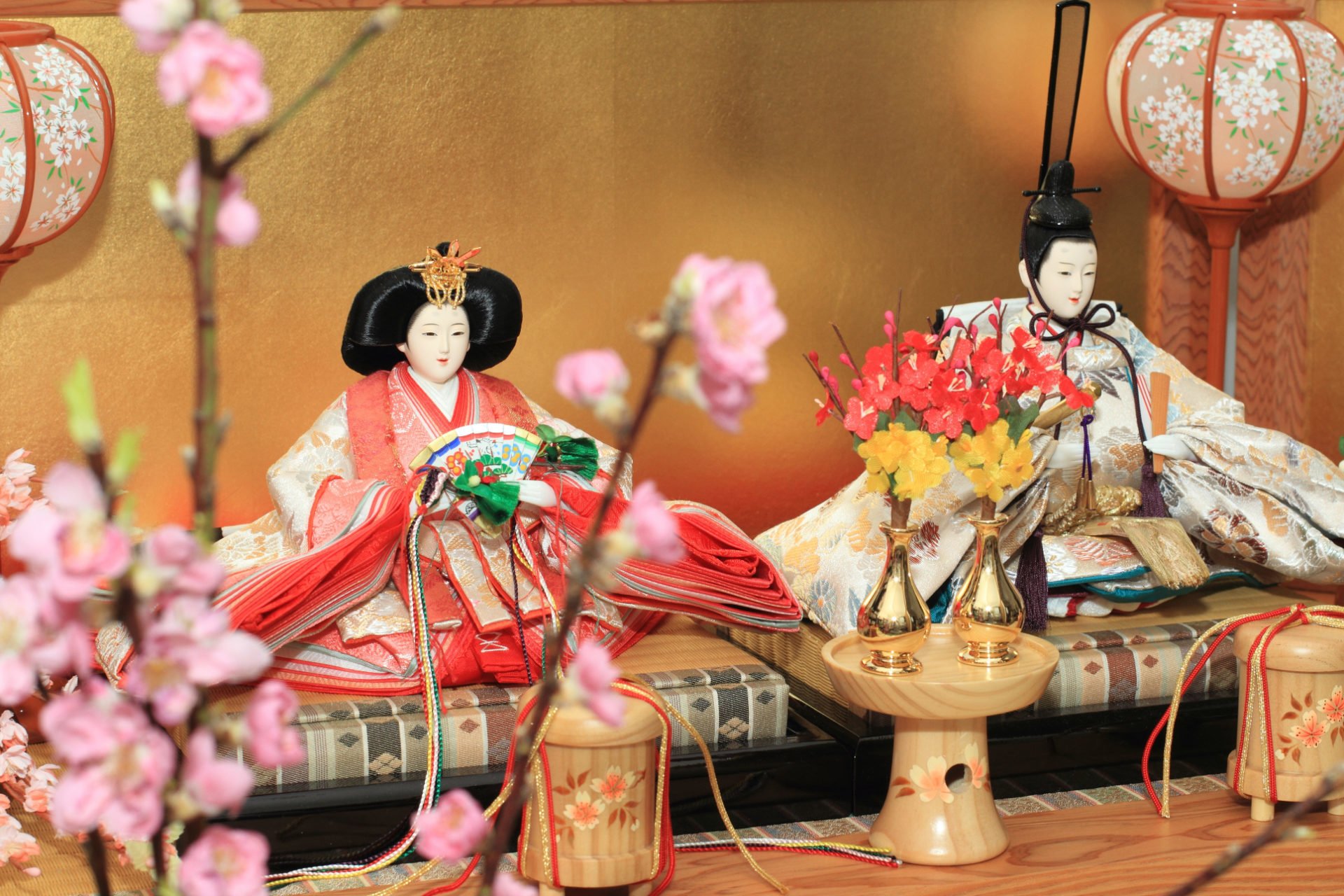

Hinamatsuri
Every year on March 3, Japan celebrates Hinamatsuri, also known as the Doll Festival or Girls' Day. This enchanting event honors the health, happiness, and growth of young girls, and it is characterized by the beautiful display of traditional dolls, mouthwatering delicacies, and vibrant customs. Let's delve into the rich history and customs of Hinamatsuri, a cherished celebration that showcases Japan's unique culture and traditions.
The origins of Hinamatsuri date back to the Heian period (794-1185). The festival was derived from an ancient Chinese practice of transferring one's misfortunes to dolls and then releasing them into a river to be carried away. Over time, the custom evolved, and the focus shifted towards celebrating and praying for the well-being and prosperity of young girls.
During the Edo period (1603-1868), Hinamatsuri became a more extravagant affair, with the introduction of hina-ningyo (ornamental dolls). These elaborate dolls, depicting the royal court of the Heian period, are displayed on a multi-tiered platform covered in red fabric, known as the hinadan.
The focal point of Hinamatsuri is the hina-ningyo display, which features an array of intricately crafted dolls. Each doll has a unique role, and they are arranged in a specific order from top to bottom. The top tier hosts the Emperor and Empress, followed by three court ladies, five male musicians, two ministers, and three samurai on the lower tiers.
The dolls are adorned in traditional Heian period attire, complete with elaborate hairstyles and accessories. Each doll is a work of art, handcrafted by skilled artisans who have devoted years to perfecting their craft. The dolls are often passed down through generations, becoming treasured family heirlooms.
Hinamatsuri is not only a visual feast but also a culinary delight. A variety of festive foods are prepared and enjoyed during the celebration, many of which hold symbolic significance. Some popular dishes include:
Hina-arare: Sweet rice crackers coated in sugar, which symbolize a wish for sunny weather.
Chirashizushi: A colorful sushi dish with an assortment of ingredients scattered over a bed of sushi rice, representing happiness and prosperity.
Hishimochi: Diamond-shaped rice cakes in three colors—pink, white, and green—representing fertility, purity, and health, respectively.
Clam Soup: A clear soup with whole clams in their shells, symbolizing unity and a harmonious marriage.
In addition to these dishes, a sweet rice drink called shirozake is enjoyed during Hinamatsuri. Shirozake is made from fermented rice and is non-alcoholic, making it suitable for children to partake in the festivities.
While the traditional customs of Hinamatsuri are still widely practiced, modern adaptations have also emerged. Families may opt for smaller, more compact hina-ningyo displays due to limited living space, while others incorporate contemporary themes or characters into their doll sets.
Many communities host public Hinamatsuri events, including doll exhibitions, workshops, and performances. These gatherings allow families to come together and share their appreciation for this treasured festival, while also introducing the customs and traditions to a new generation.
Hinamatsuri is a captivating celebration that showcases the beauty and intricacy of Japanese culture. The festival's rich history, dazzling doll displays, and delectable dishes create a magical experience for families to honor and cherish their daughters.

